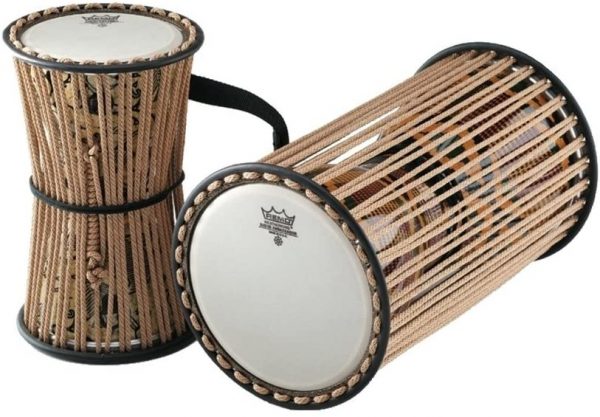The word “Ayan” means drummer in the Yoruba language. Drumming is a specialized and often inherited activity in the Yoruba culture. As a matter of fact, expert drummers were part of the royal entourage and attached to the king’s court. Professional drummers often displayed a broad vocabulary, history and literature.
Read more about Discover Nigeria
The ‘Ayangalu’ -who is considered the first Yoruba drummer’s (whether myth, fiction or real) deification adds to the amplification of the spirit of drumming and is said to be the inspiration behind drummers and the art of drumming.
This is a continuation (from an earlier article) of our overview on the YorubaBatá or the Talking Drum. Although there are so many modern musical instruments, the talking drum’s relevance can never be overlooked or downplayed in the midst of those. This article focuses mainly on furnishing you with some of the kinds of talking drums you might come across in the ensemble of the talking drums set. This is similar to what you have in a jazz set with the toms, snare drums, bass drums etc.
The Talking Drum Ensemble
There are different families of talking drums. But each drum in the ensemble is important for laying the rhythmic foundation for the lead drums to interact and talk in their environment. Some of the different drums and their names are mentioned below:
- Iyá ìlù
This drum is usually used to dictate the pace, determine the song and gives clues and prompts to the rest of the ensemble. The phrase Iyá ìlù means ‘the mother drum’. The mother of all drums means that the particular drum is traditionally the lead drum and also the largest in the ensemble or set and It is usually played by an experienced master talking drummer. The Iyá ìlù can also play as a supporting sound. It is usually played by an experienced master talking drummer. It is also the only drum in the ensemble that is decorated with small metallic bells called saworo which provide extra sound.
Sign up to the Connect Nigeria daily newsletter
- Gudugudu
This is referred to as the ‘father drum’. Rather than taking the normal hourglass shape of the other talking drums in the ensemble, it takes a bowl-like shape instead. Its carrying strap goes around the neck so as to hold the instrument directly in front of the player. It also has a waxed spot at the centre of the membrane which produces a low tone, whilst the rest of the skin creates a higher, sharp tone.
- Omele Gangan
These are the smallest sized drums in the ensemble. Omele is transliterated sometimes as an ‘accompanying rhythmic instrument’. They are usually tied up so that when played they emit a fixed high pitch. Their part in the ensemble is repetitive and therefore, normally played by younger and inexperienced members of the family.
- Omele Batá
Just as the Omele gangan is the smallest in the entire ensemble, the Omele Bata are the smallest drums in the Batá family. The instrument consists of three drums which can be used both to talk or as accompaniment. They replicate the high, medium and low tones of Yorùbá. They are played with two leather straps called bilala or with bendy plastic strips, but not usually with the hands.
- Adamo
It is the most popular instrument for use as the lead instrument that does the talking. This is because this drum has the widest tonal range.
- Sakara
This drum is made with a strong, thick clay rim and played with lightweight straight sticks. They play an open tone and can be made to talk by pushing the softened skin from the inside. In the hands of a good player, they can sound as powerful as the other Yorùbá Talking Drums, alongside which they now often play.
So, there you have them. The different members of the talking drum ensemble. Hope this article will enable you to refer to each member of the talking drum family by name when you see an ensemble? There is still a third part to this article that discusses the actual ‘speaking of the drum’.
Sources:
Iheanyiigboko.wordpress
Refined NG
Featured Image Source: Eagles Nest Cafe
Got a suggestion? Contact us: [email protected]


